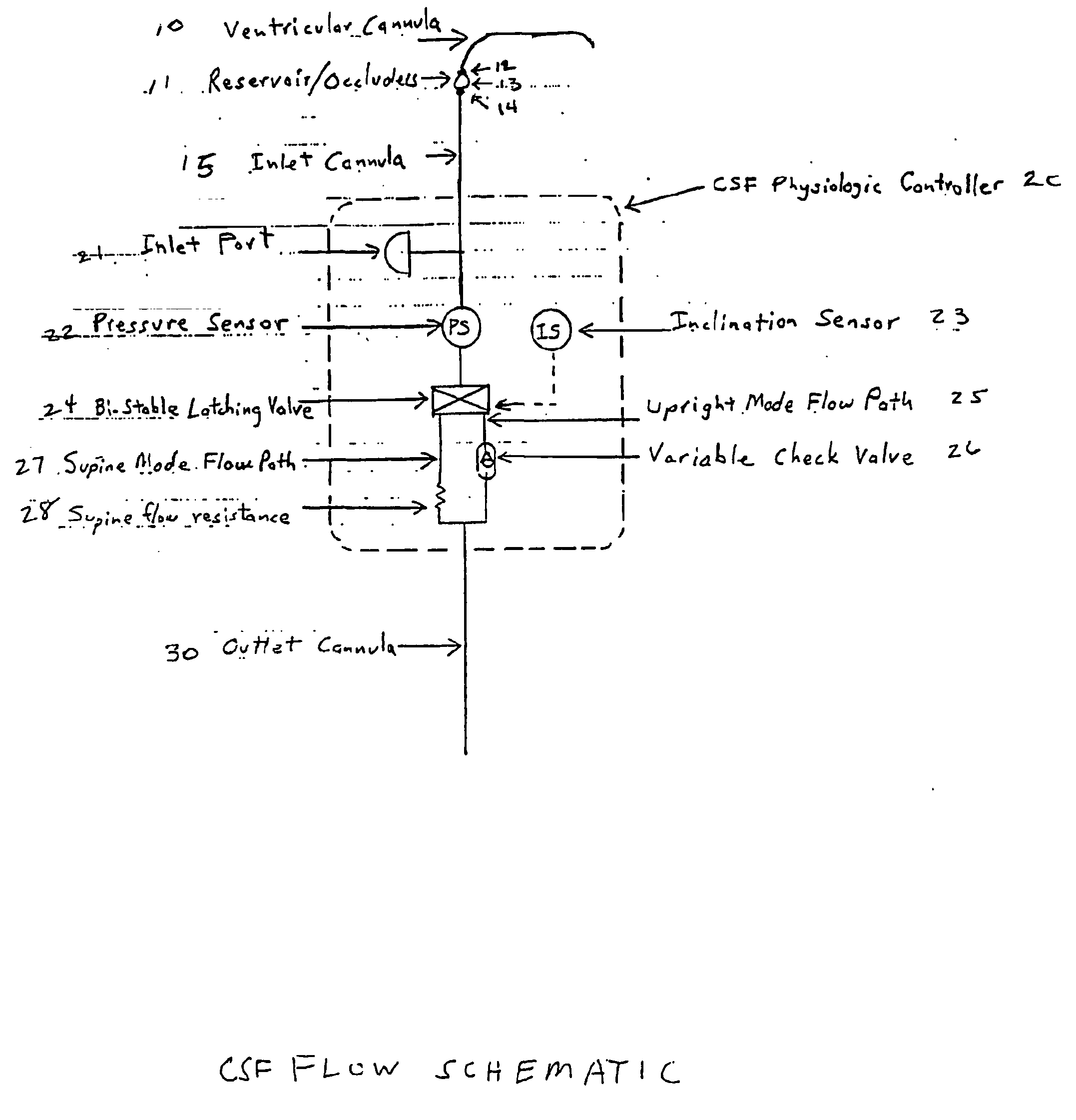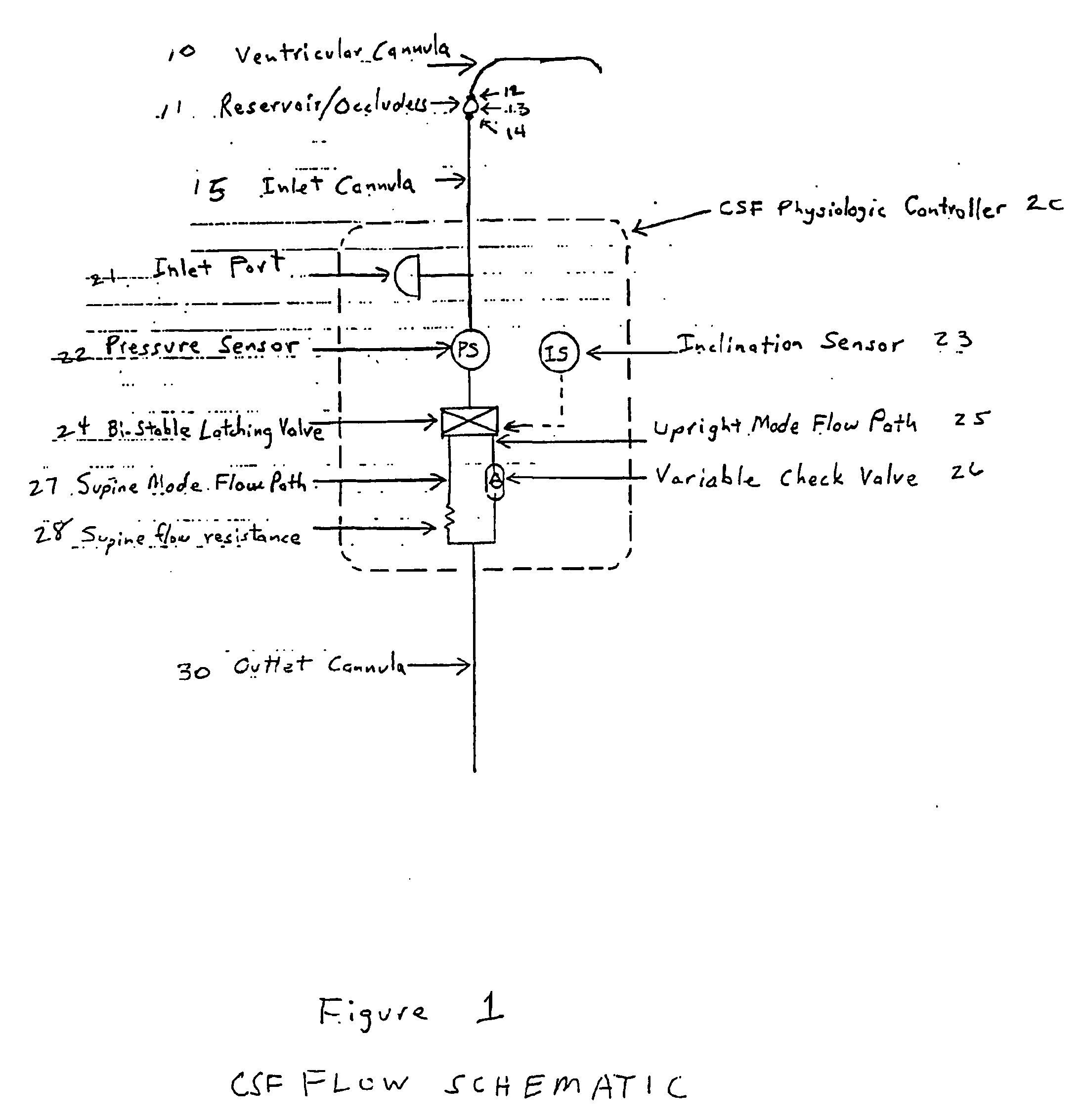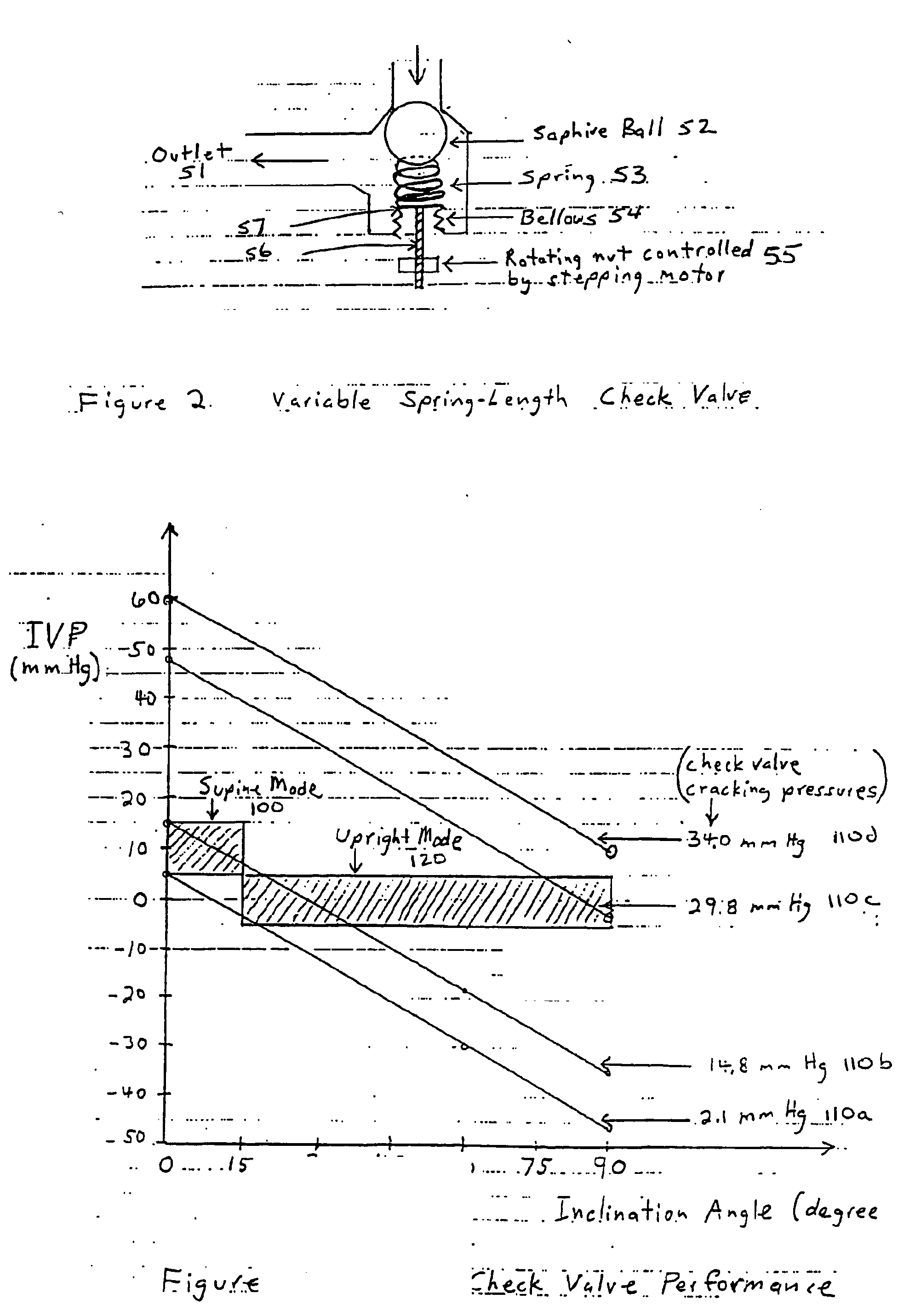Diagnostic algorithms for a csf physiologic controller
a physiologic controller and diagnostic algorithm technology, applied in the field of diagnostic algorithms for csf physiologic controllers, can solve the problems of serious complications, fluid not being removed quickly, unbalanced fluid system,
- Summary
- Abstract
- Description
- Claims
- Application Information
AI Technical Summary
Benefits of technology
Problems solved by technology
Method used
Image
Examples
Embodiment Construction
[0026] The CSF Physiologic Controller is a multi mode drainage system that contains at least two flow paths: (1) a supine mode: a low resistance flow path for when the patient is in the supine or substantially supine position and (2) an upright mode: a flow path containing a programmable variable check valve to prevent over-drainage when the patient is in the upright or substantially upright position. A bi-stable latching valve directs the CSF flow to either the low resistance path or the check valve path based on an inclination sensor within the CSF Physiologic Controller. If the inclination sensor angle is below a programmable critical angle, the bi-stable latching valve directs flow to the low resistance path. If the inclination sensor angle is equal to or above a critical programmable angle, the bi-stable latching valve directs flow to the check valve path. For purposes of illustration, a dual mode controller will be described; however, the present invention is not limited to on...
PUM
 Login to View More
Login to View More Abstract
Description
Claims
Application Information
 Login to View More
Login to View More - R&D
- Intellectual Property
- Life Sciences
- Materials
- Tech Scout
- Unparalleled Data Quality
- Higher Quality Content
- 60% Fewer Hallucinations
Browse by: Latest US Patents, China's latest patents, Technical Efficacy Thesaurus, Application Domain, Technology Topic, Popular Technical Reports.
© 2025 PatSnap. All rights reserved.Legal|Privacy policy|Modern Slavery Act Transparency Statement|Sitemap|About US| Contact US: help@patsnap.com



